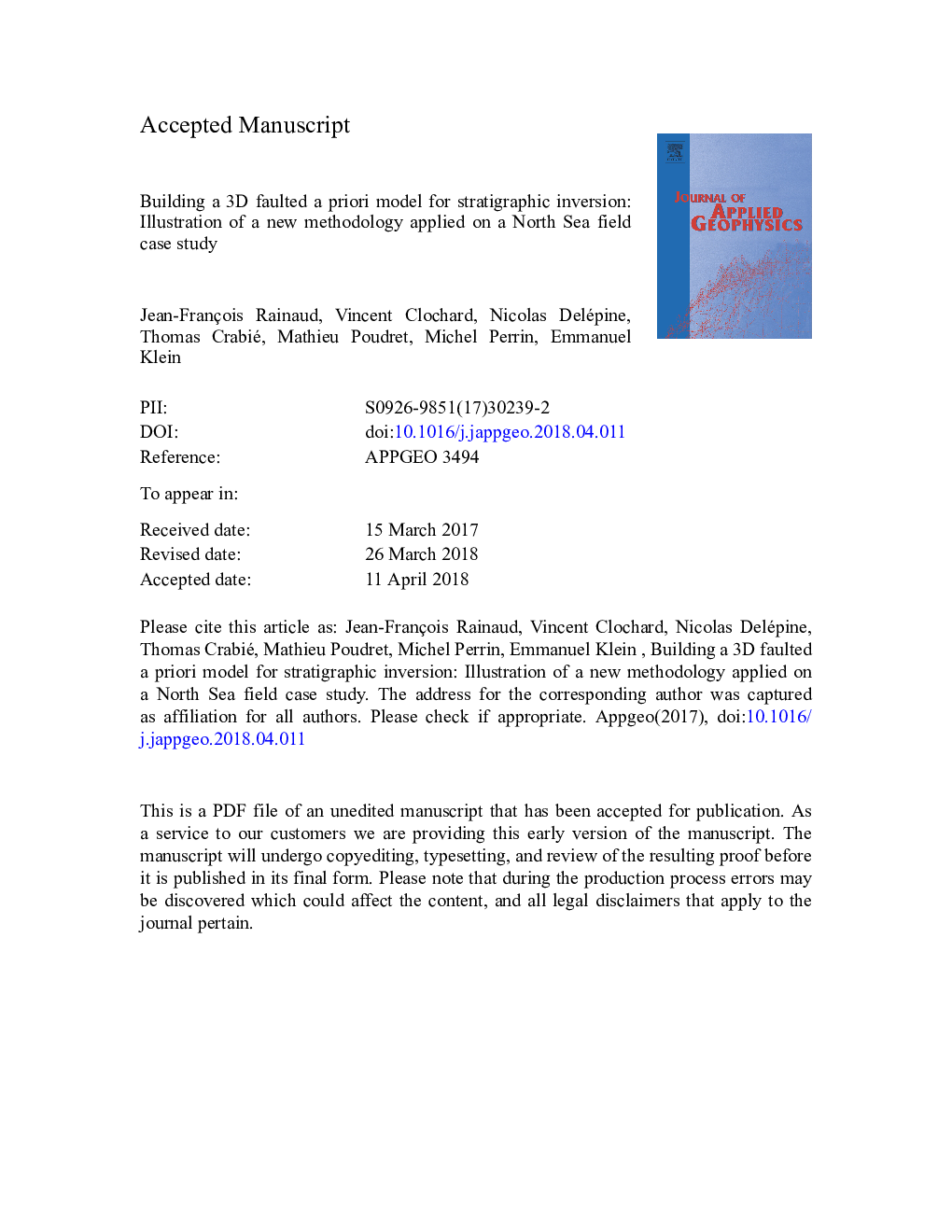| کد مقاله | کد نشریه | سال انتشار | مقاله انگلیسی | نسخه تمام متن |
|---|---|---|---|---|
| 8915369 | 1641097 | 2018 | 23 صفحه PDF | دانلود رایگان |
عنوان انگلیسی مقاله ISI
Building a 3D faulted a priori model for stratigraphic inversion: Illustration of a new methodology applied on a North Sea field case study
ترجمه فارسی عنوان
ساخت یک مدل سه بعدی بر روی یک مدل پیش فرض برای معکوس چینه شناسی: تصویری از یک روش جدید در مورد مطالعه موردی منطقه دریای شمال
دانلود مقاله + سفارش ترجمه
دانلود مقاله ISI انگلیسی
رایگان برای ایرانیان
موضوعات مرتبط
مهندسی و علوم پایه
علوم زمین و سیارات
فیزیک زمین (ژئو فیزیک)
چکیده انگلیسی
In complex media, such as faulted reservoirs, flow behavior predictions within volumes close to faults can be a very challenging issue. During the development plan, it is necessary to determine which types of communication exist between faults or which potential barriers exist for fluid flows. The solving of these issues rests on accurate fault characterization. In most cases, faults are not preserved along reservoir characterization workflows. The memory of the interpreted faults from seismic is not kept during seismic inversion and further interpretation of the result. The goal of our study is at first to integrate a 3D fault network as a priori information into a model-based stratigraphic inversion procedure. Secondly, we apply our methodology on a well-known oil and gas case study over a typical North Sea field (UK Northern North Sea) in order to demonstrate its added value for determining reservoir properties. More precisely, the a priori model is composed of several geological units populated by physical attributes, they are extrapolated from well log data following the deposition mode, but usually a priori model building methods respect neither the 3D fault geometry nor the stratification dips on the fault sides. We address this difficulty by applying an efficient flattening method for each stratigraphic unit in our workflow. Even before seismic inversion, the obtained stratigraphic model has been directly used to model synthetic seismic on our case study. Comparisons between synthetic seismic obtained from our 3D fault network model give much lower residuals than with a “basic” stratigraphic model. Finally, we apply our model-based inversion considering both faulted and non-faulted a priori models. By comparing the rock impedances results obtain in the two cases, we can see a better delineation of the Brent-reservoir compartments by using the 3D faulted a priori model built with our method.
ناشر
Database: Elsevier - ScienceDirect (ساینس دایرکت)
Journal: Journal of Applied Geophysics - Volume 154, July 2018, Pages 128-135
Journal: Journal of Applied Geophysics - Volume 154, July 2018, Pages 128-135
نویسندگان
Jean-François Rainaud, Vincent Clochard, Nicolas Delépine, Thomas Crabié, Mathieu Poudret, Michel Perrin, Emmanuel Klein,
